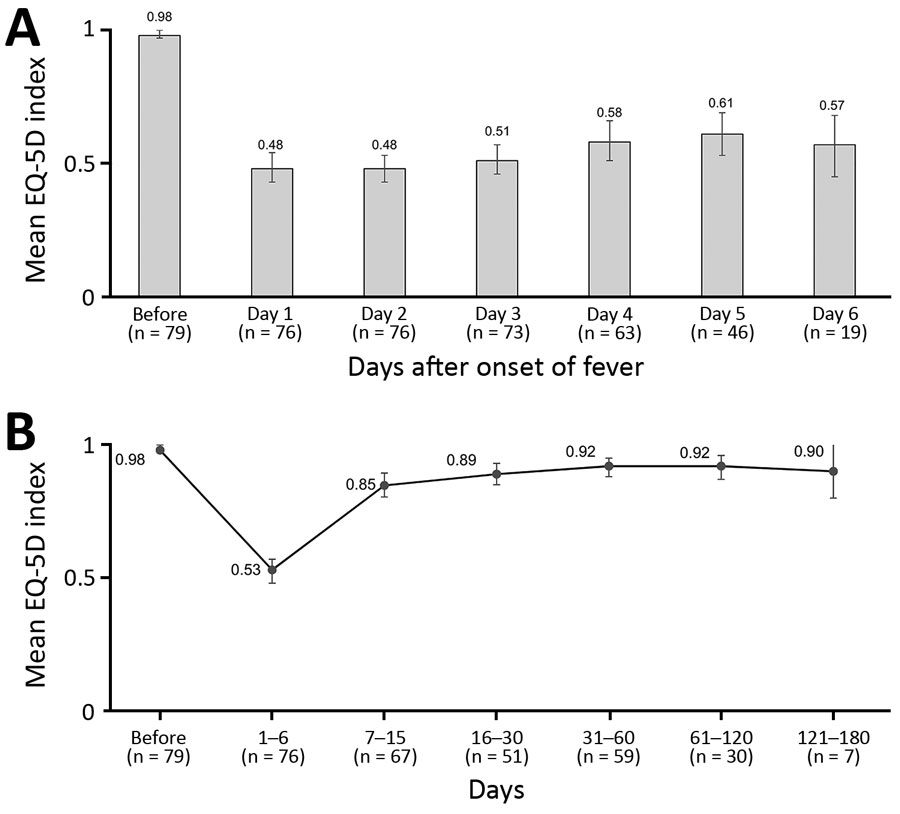Volume 26, Number 4—April 2020
Dispatch
Health-Related Quality of Life after Dengue Fever, Morelos, Mexico, 2016–2017
Figure 2

Figure 2. Average health-related quality of life, as measured by the EQ-5D index score, in patients with laboratory-confirmed dengue during days 1–6 of a dengue fever episode (A) and from baseline to 121–180 days (B), Morelos, Mexico, 2016–2017. The EQ-5D scale is a standardized method for measuring health status. n values indicate number of patients responding to questionnaire during the indicated day range. Error bars indicate 95% CI.
1These authors contributed equally to this article.
2Current affiliation: German Doctors e.V., Bonn, Germany.
3Current affiliation: Centre for Fire Protection and Rescue Services–Hochsauerlandkreis District, Meschede, Germany.
Page created: March 17, 2020
Page updated: March 17, 2020
Page reviewed: March 17, 2020
The conclusions, findings, and opinions expressed by authors contributing to this journal do not necessarily reflect the official position of the U.S. Department of Health and Human Services, the Public Health Service, the Centers for Disease Control and Prevention, or the authors' affiliated institutions. Use of trade names is for identification only and does not imply endorsement by any of the groups named above.